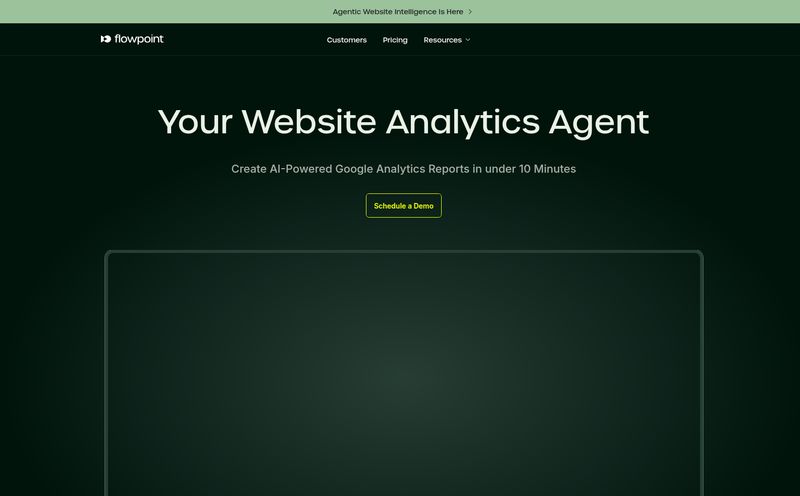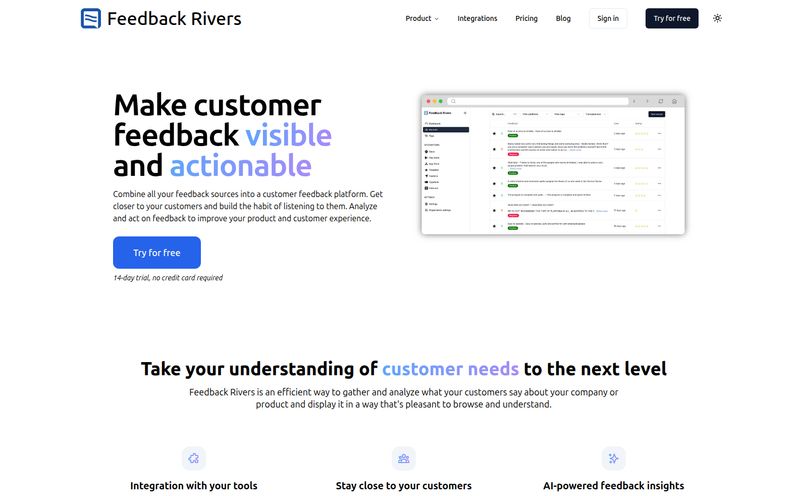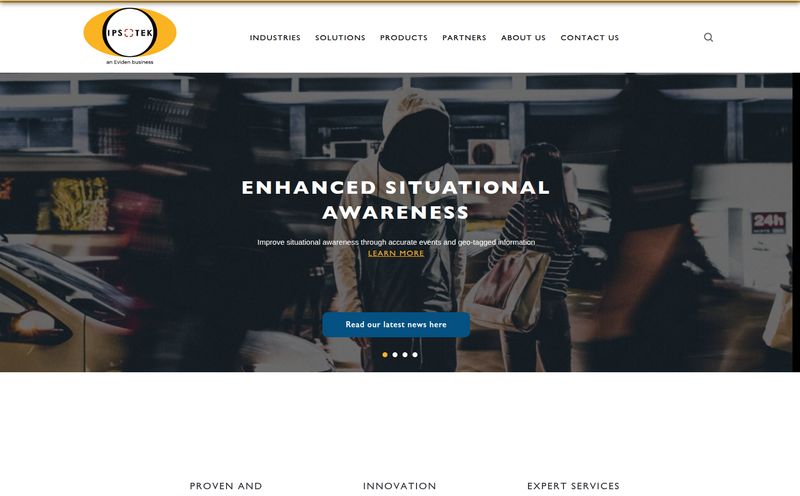If you’ve worked in data for more than a week, you have a folder somewhere on your machine named “queries.” And inside that folder is a chaotic mess of files like final_query_for_dashboard_v3_USE_THIS_ONE.sql and untitled_query_7.sql. It’s our digital junk drawer. When your boss asks, “Hey, what tables does the weekly revenue report pull from?” you feel a cold sweat, because you know the answer involves a 30-minute archeological dig through that folder.
For years, the solution to this has been “data governance” and “data catalogs.” These are terms that usually make me want to go take a long walk. They often mean expensive, clunky, enterprise software that takes six months to implement and that nobody on the actual analytics team enjoys using. It’s a solution in theory, but a headache in practice.
So when I came across Datascale, I was skeptical. Another one? But after kicking the tires and running it through its paces, I’ve got to say... this one feels different. It feels like it was built by someone who has actually lived the pain. This isn't just another catalog; it's a data discovery and lineage tool that starts from the place we all live: our SQL queries.
So What Is Datascale, Really?
At its heart, Datascale is a smart platform that connects to your data warehouse, reads your saved SQL queries, and automatically builds a living, breathing map of your data world. It’s less of a stuffy librarian shushing you and more of a clever data cartographer that hands you a beautifully drawn map of a treacherous landscape.
It takes all that scattered knowledge—the queries you wrote, the views your colleague built, the tables the engineering team created—and puts it all into one searchable, visual, and genuinely useful place. It’s built on three core pillars: automated data lineage, AI-powered search, and visual data modeling. And frankly, the first one is the absolute showstopper.
The Magic Trick: Automated Data Lineage from SQL
This is it. The killer feature. The reason you’re still reading.
We’ve all been there. You need to change one little field in a core data model. The question is, what’s going to break? What dashboards downstream will suddenly go blank? What other models depend on this view? The traditional method involves a lot of `CTRL+F` in your code editor, frantic Slack messages, and a healthy amount of prayer.

Visit Datascale
Datascale turns this nightmare into a non-issue. By parsing your team’s SQL queries, it automatically generates a visual graph of your data lineage. You can click on any table or view and instantly see everything that feeds into it (upstream dependencies) and everything it feeds into (downstream dependencies). It’s not an exaggeration to say this can turn hours of investigative work into a 10-second glance. It’s the kind of feature that makes you wonder how you ever lived without it. It’s a straight-up game changer for anyone working with tools like dbt, where models build on top of other models.
Finding Needles in Haystacks with AI Search
Okay, so you know what will break when you change something. But what about finding the thing you need to change in the first place? Data discovery is the other side of the coin. Where do I find data about user churn? Is there a table that has both session data and subscription info?
Datascale’s answer is a GenAI-powered search. Instead of trying to remember the exact name of that one table (`prod_dw.users_transformed_final`?), you can just ask a question in plain English. “Show me tables with customer email and signup date.”
This is more than just a gimmick. It lowers the barrier to entry for everyone on the team. Junior analysts can find what they need without bugging a senior, and even less-technical product managers can start to self-serve some of their simpler data questions. It makes your data warehouse feel less like an arcane library and more like a friendly, searchable database.
Beyond Lineage: The Other Good Stuff
While lineage and search are the headliners, there are a few other features that make Datascale a well-rounded tool.
Visualizing Your Database Design
Remember those ER (Entity-Relationship) diagrams from university that seemed super theoretical? Well, they’re incredibly useful for understanding how a database is structured. Datascale can automatically generate them for you. This is fantastic for onboarding new engineers, explaining a data model to stakeholders, or just for your own sanity when you're trying to get a 30,000-foot view of your data architecture.
A Central Home for Your Data Assets
Of course, it’s also a data catalog. It lists all your assets—tables, views, columns—and gives you a single place to document them. This is where the human element still matters. Datascale can't magically know the business context of a column named `fct_rev_adj`. But it gives you the perfect, easy-to-use place to write that description once so no one has to ask what it means ever again. No more knowledge silos in Slack or Confluence pages that were last updated two years ago.
Let's Talk Money: Datascale Pricing Breakdown
Alright, the part everyone scrolls down for. The price. I was pleasantly surprised here. Compared to some of the giant enterprise tools that require a mortgage to afford, Datascale’s pricing is refreshingly transparent and reasonable.
| Plan | Price | Best For |
|---|---|---|
| Starter | $15 / month | Individuals and freelancers who want to organize their work. |
| Team | $25 / user / month | The sweet spot for most small to medium-sized data teams. |
| Scale | Custom | Large companies and agencies with specific, high-volume needs. |
They also offer a 7-day free trial for the Starter and Team plans, so you can try it out without any commitment. Honestly, the Team plan at $25 a head seems like a steal for the amount of time and headaches it can save a team of analysts and engineers.
The Not-So-Shiny Parts (A.K.A. The Cons)
No tool is perfect, and it's important to be realistic. Datascale is opinionated, and that comes with some trade-offs.
First, it lives and breathes SQL. Its entire lineage magic is based on parsing SQL queries. If a significant part of your data transformation process happens outside of SQL (like in a complex Python script that Pandas-massages data before loading), that part of the lineage will be a black box. For modern data stacks built on tools like Snowflake, BigQuery, and dbt, this is a non-issue. But for others, it's a critical consideration.
Second, while it automates the structure, it doesn't automate the context. You still need the discipline to document your data models and columns. It provides the shelf, but you still have to put the books on it. And to keep things perfectly in sync with schema changes, you’ll need to use their API, which requires a bit of engineering lift.
So, Who Is Datascale Actually For?
After using it, a clear picture of the ideal user emerges. Datascale is a fantastic fit for:
- Data Analysts and Analytics Engineers who are tired of untangling SQL dependencies.
- Small to medium-sized data teams using a modern, SQL-centric data stack.
- Companies that prioritize discovery and speed over heavyweight, compliance-driven governance.
It might not be the best fit for massive enterprises with complex, non-SQL legacy systems or those who need strict, top-down access control policies as their number one priority.
Conclusion: A Map and a Compass for the Data Wilderness
Datascale impressed me. It’s not trying to boil the ocean or solve every data problem under the sun. Instead, it focuses on a few of the most painful, everyday problems for data practitioners and solves them with elegance and simplicity. The automated lineage is worth the price of admission alone.
It’s a tool that provides clarity. In a field that is constantly getting more complex, having a simple map and a compass to navigate your own data warehouse is invaluable. It brings a bit of sanity back to the chaotic world of data, and for that, it gets a strong recommendation from me.
Frequently Asked Questions
- Can Datascale work with my existing SQL models and queries?
- Absolutely. In fact, that's its primary function. It connects to your data warehouse and analyzes your existing SQL code to build out the lineage and catalog.
- How can I try Datascale?
- Datascale offers a 7-day free trial for both its Starter and Team plans. You can sign up on their website and connect your data source to get started.
- How does it figure out the order of execution for data lineage?
- It parses the SQL syntax of your queries and models. By identifying the source tables (in the `FROM` and `JOIN` clauses) and the target table (e.g., in a `CREATE TABLE AS` statement), it can construct a dependency graph showing what comes from where.
- How do I integrate with the Datascale API?
- Datascale provides API documentation for developers. You can use the API to programmatically manage your data assets, such as syncing schema changes or updating metadata from other systems.
- What kind of support is available?
- Support levels vary by plan. The Team plan includes priority support, while the Scale plan offers custom support arrangements to fit the needs of larger organizations.



